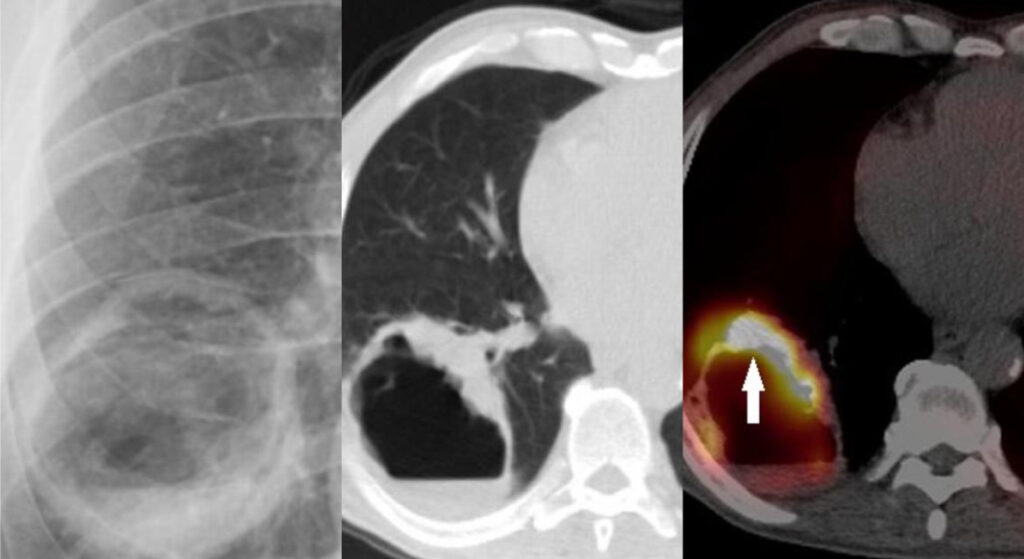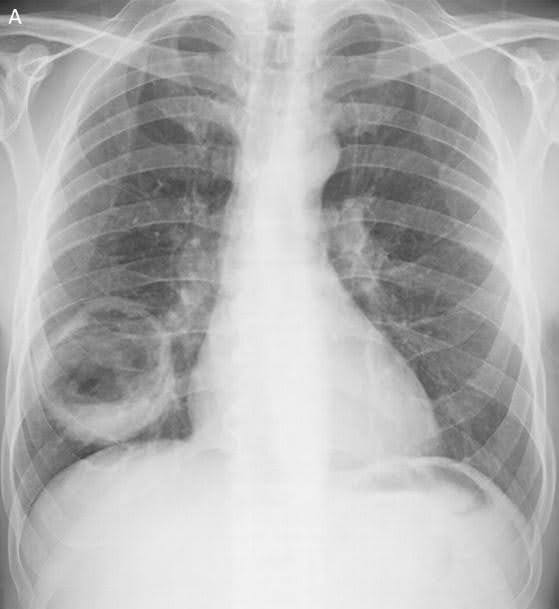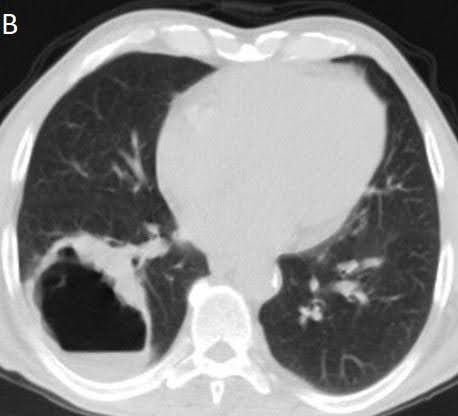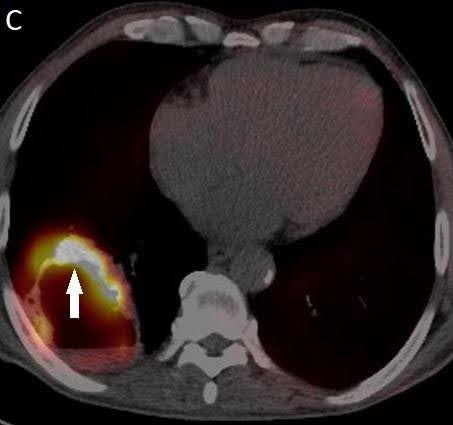
A Case Of Tuberculosis In The Cavitary Lesion Suggestive Of Neoplasm
The pathological results were nonspecific. Because the sputum culture from the patient was positive for M. tuberculosis, this lesion was evaluated as a cavitary lesion due to tuberculosis
17/08/2025
CT plays a crucial role in differentiating between benign and malignant cavitary pulmonary lesions
Altınkaya C and Karaman A – Tuberculosis In The Cavitary Lesion
Cemile Altınkaya[1] and Adem Karaman[2]
[1] Department of Radiology, Ataturk University School of Medicine, Erzurum, Turkey.
[2] Department of Radiology, Ataturk University School of Medicine, Erzurum, Turkey.
Corresponding author: Dr. Cemile Altınkaya. E-mail: cemilekivrakaltinkaya@gmail.com
Financial Support: None
Conflict of Interest: The authors declare no conflicts of interest.
Editor: Manoel Otavio da Costa Rocha
Orcid
Cemile Altınkaya – https://orcid.org/0009-0003-9608-122X
Adem Karaman – https://orcid.org/0000-0002-3091-0609
A 60-year-old man was admitted to the chest disease outpatient clinic with shortness of breath, hemoptysis, and cough. Chest radiography revealed a radiopaque, round, and cavitary lesion in the lower lobe of the right lung (Figure 1). The patient underwent non-contrast thorax imaging and positron emission tomography/computed tomography (PET-CT) imaging. PET-CT showed a 61×52 mm hypermetabolic cavitary mass lesion in the lower lobe of the right lung, with a wall thickness of 13 mm at the thickest part and internal surface irregularities (Figure 2 and 3). A thoracic Tru-Cut biopsy was performed because malignancy was suspected.
The pathological results were nonspecific. Because the sputum culture from the patient was positive for M. tuberculosis, this lesion was evaluated as a cavitary lesion due to tuberculosis.
CT plays a crucial role in differentiating between benign and malignant cavitary pulmonary lesions. Radiological features suggestive of malignancy include cavity wall thickness >5 mm, irregular or nodular inner margins, presence of air-fluid levels, and increased metabolic activity on PET-CT1,2,3.
In cavitary mass lesions with malignant criteria, tuberculosis-related cavitary lesions may also exhibit hypermetabolic uptake on PET-CT4.
Acknowledgments
We would like to express our sincere gratitude to Atatürk University Research Hospital for providing technical support for the development and implementation of this study.
REFERENCES
- Lal NR, Agarwal GR, Boruah DK. Role of Multidetector Computed Tomography in Differentiation of Benign and Malignant Cavitary Lung Lesions With a Histopathological Correlation: A Retrospective Cross-Sectional Study. Cureus. 2023;15(8):e43005.
- Parkar AP, Kandiah P. Differential Diagnosis of Cavitary Lung Lesions. J Belg Soc Radiol. 2016;100(1):100.
- Naggar, A., Laasri, K., Berrada, K. et al. Differential diagnoses of cavitary lung lesions on computed tomography: a pictorial essay. Egypt J Radiol Nucl Med. 2023;54:149.
- Karaman A, Ucar EY, Kaya S, Araz Ö. Is it Cyst or Neoplasm? The Role of Thorax Magnetic Resonance Imaging. Arch Bronconeumol. 2021;57:(12):769.

FİGURE 1: Radiopaque, round-shaped cavitary lesion in the lower lobe of the right lung on chest radiography

FİGURE 2: Cavitary lesion in the lower lobe of the right lung on non-contrast thorax computed tomography images.

FİGURE 3: Positron emission tomography/computed tomography imaging shows hypermetabolic involvement.









